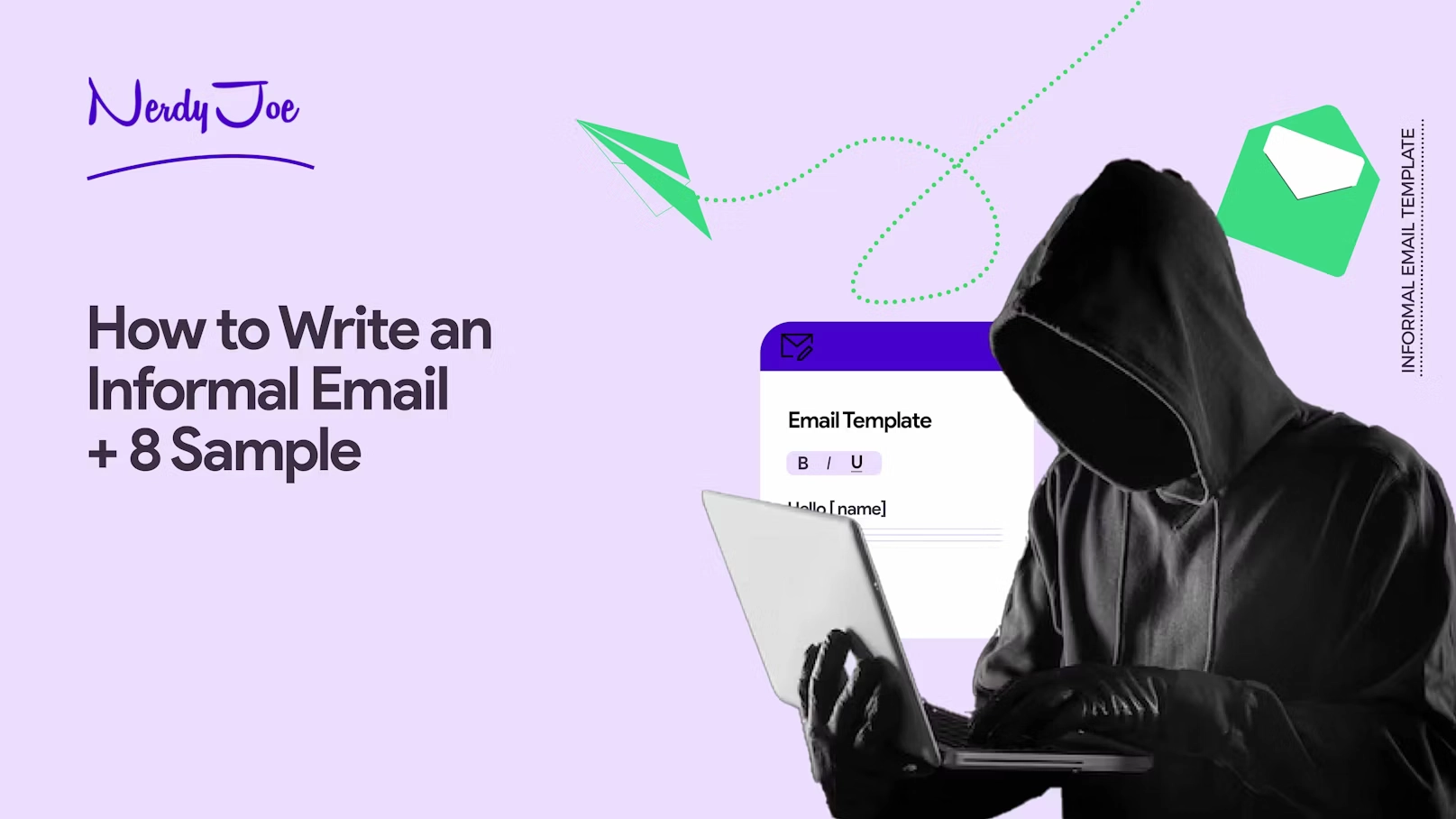Ask any sales rep what they think about the effectiveness of outbound lead gen. Most will tell you that it has fallen down the gutters of the sales process, along with the other less effective outbound sales strategies.
They even back up this with statistics showing that outbound lead generation costs 39% more than inbound, and the conversion margin indicates that only 5-10% of the leads convert.
But that does not mean that your outbound lead generation efforts can’t yield the results you desire.
Andrei Zinkevich, Co-Founder of Fullfunel.io, conducted an outbound lead generation campaign and had a 20% conversion rate.
The truth is that most people fail to understand outbound lead generation and how it works.
So much so that they go about it the wrong way, get awful results, and convince themselves that outbound lead generation campaigns don’t work.
Here are the typical scenarios:
- Scenario 1: You buy email lists and send mass emails with the hopes that at least a given percentage of those purchased contacts will reply.
Guess what? The result will always be a fiasco because outbound lead gen has never been about playing the numbers game.
Truth is, you will get tremendous results targeting 10 people the right way than sending email blasts to 3,000 contacts. - Scenario 2: You do not take the much-needed time to define your Ideal Customer Profile (ICP), and as a result, you send the message to the wrong target audience.
- Scenario 3: You pitch your product to each of your Linkedin connections without establishing a relationship or proving your value whatsoever.
Or when you do, you tout your product’s features instead of positioning it to meet your target’s needs and desires, solve their problems, positively impact or improve their lifestyle, etc.
If any of these resonates with you, then it’s about time you reconsidered how you approach outbound lead generation campaigns.
In this article, you’ll learn how to generate and close outbound leads using proven tactics that have helped us land our biggest deals.
What is outbound lead generation?
Outbound lead generation is when you run promotional campaigns or send marketing materials to potential customers who are not aware of your product or brand in order to generate interest in your product or service and eventually get them to buy.
A successful lead generation strategy requires researching and deeply understanding your target audience.
Next, you must be able to build your ICP and send them customized and value-packed outreach messages that help them solve their pain points while building product experience.
The Anatomy of an outbound lead generation campaign
Here are a few attributes and traits of a great outbound campaign and strategy.
- Excellent product-market fit: One of the key steps in outbound lead generation is to make sure you know who your target audience is and whether your product is able to provide value and solve their problems.
- Highly personalized: there’s way more to personalization than just using [[Prospect first name]] and [[Company name]].
A personalized message should demonstrate that you’ve researched your prospects and know their main pain points, needs, desires, and even dreams.
Among other things, you can use customized visuals, mention recent interesting achievements of their company (and potentially their contribution), and talk about technologies they use.You can also talk about their pain points and how they’re struggling with them, craft stories using protagonists with the same attributes, traits, and struggles as them, and more. - Prospect-focused vs. product-focused: an ideal outreach message should be crafted in a way that addresses your prospects’ pain points. It should not be all about you or your product’s features. Features only matter as they benefit your prospects and help them achieve results.
- Targeted: you don’t just cold call or cold email people because you’ve got their email addresses. You do it because they fit in your ICP. How do you know they do? By leveraging firmographic and technographic data.
What are firmographic data?
Firmographic data pertains to the descriptive attributes you use to segment your target accounts (niche, business size, company structure and status, customer base, geographic location, etc.).
What are technographic data?
Technographic data is information that best describes the current tech stack of your target accounts, their adoption rate, and the potential challenges they struggle with.
Inbound lead generation vs. Outbound lead generation (inbound vs. outbound marketing)
Inbound lead generation consists of creating content and campaigns that target, attract, and convert potential customers that are already on the lookout for a solution.
The big difference between outbound lead generation and inbound lead generation is that the latter supposes that the potential customer is aware of the problem and its potential solutions.
So, they seek the solution, and you position your content and marketing campaigns to target, reach and win them over.
e.g., You write a blog post about outbound lead generation tools, plug in your software, and optimize the post for the keyword “outbound lead generation tools.” This way, anyone looking for lead gen software can find it on the SERP.
Outbound lead generation, on the other hand, supposes that the potential customer is not aware of the solution — the product you’re offering. It might even be that they are not aware of the problem in the first place.
And so, the strategy mainly involves using cold outreach tactics like sending cold emails, cold calling, etc., to educate the prospects on the problem and the solution alike.
Quick recap.
| Inbound | Outbound | |
|---|---|---|
| Sales cycle | Inbound lead generation has a much longer and cliffy sales cycle. You’ll have to build funnels and create different types of content. Also, you won’t have any valid metric that can inform how you move customers across the funnels. | Outbound lead generation cycles are expressed through outreach campaigns. Marketers create campaigns that educate prospects on the product and push for adoption. It’s a much shorter and response-driven strategy. |
| Scalability | Scalable | Scalable |
| Budget | Inbound is quite affordable and can be easily implemented if you’re on a shoestring budget. Though, it can come out being more expensive considering the amount of time you should put in and the requirements. For example, it will require putting up a website and deploying content across several platforms at the same time. | Outbound, in its most traditional form, can be costly. But activities like cold email, LinkedIn outreach, and cold calling are very low budget. You can start either without any budget. All you need is to build a contact list and kick things off from there. |
| How fast do you get results? | Inbound doesn’t bring in results straight away. It’s more of a slow and long-term game. | Outbound brings in more revenue, FAST. You send direct messages to your prospects and try to close them. |
| Targeting options | Limited targeting options. You create content and post it on your blog or social media platform. You wait for searchers to find your blog. Plus, on these platforms, you can’t really tell who is doing what with your content or how they engage with it all together. | Outbound provides you with better targeting options. You get to define the audience and target them with direct messages via LinkedIn or cold email. You can also cold call them. Each targeting option has its own merits and they work best when used together. |
Does outbound lead generation still work?
Outbound lead generation is the most effective way to connect with an audience that you’re sure is the perfect fit for the product or service you’re selling.
For instance, if your buyer persona is a super busy decision-maker, chances are they won’t spend much time scrolling social media or browsing through business directories to find the ideal solution for their needs.
So, the vendors that approach them directly with messages that cut through the noise are the ones that will end up in their consideration set.
When done right, outbound lead generation can deliver tremendous results. Don’t take our word for it.
In one of his recent campaigns, Andrei Zinkevich, Co-Founder of Fullfunel.io, reached out to a select list of 30 qualified companies for his client (a high-ticket B2B service provider).
Andrei took the time and ensured to properly:
- conduct account research,
- warm-up those accounts, and
- send personalized messages with unique proposals,
Andrei’s campaign had a 37% response rate (12 out of 30 accounts responded) and a 20% success rate (2 deals closed out of the 12 accounts that responded).
In total, it was a $300,000 revenue. That’s an average of $150,000 per account.
Another example: at Nerdy Joe, where we offer outbound lead generation services, we’ve run a campaign and closed Ross Simmonds, founder of FoundationInc.
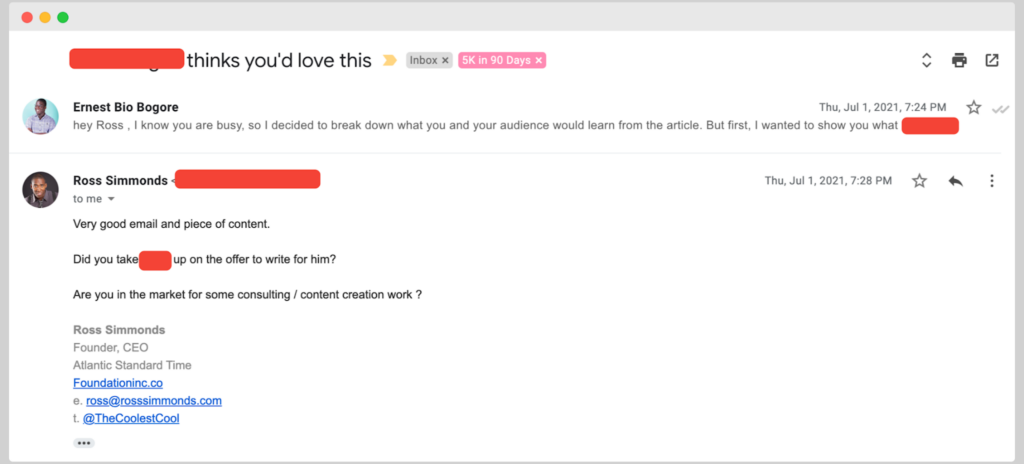
Here is another successful example.
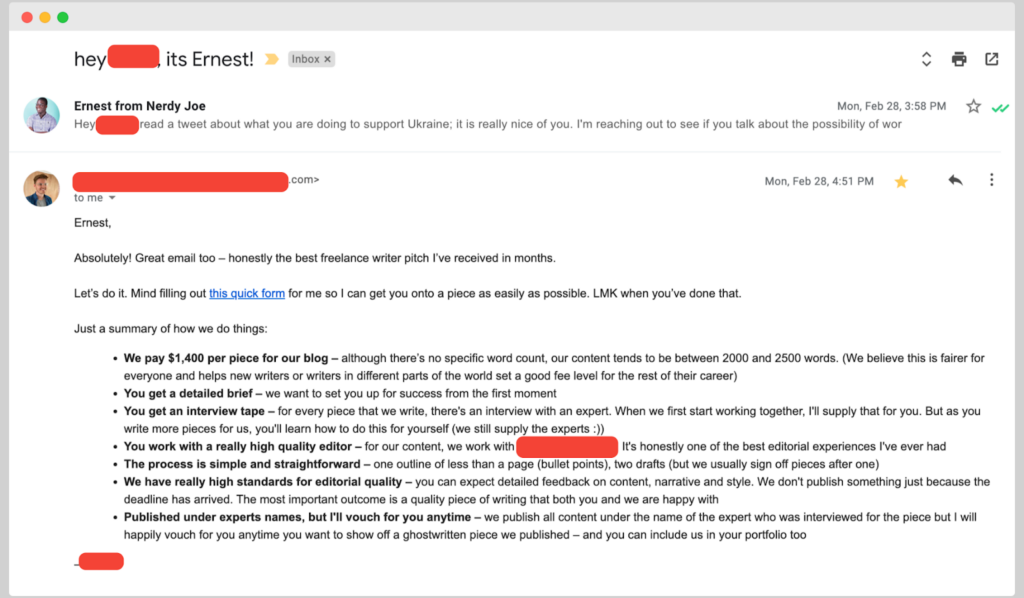
As you can see from this screenshot, the mail sent to the prospect was so compelling that he couldn’t help but acknowledge it before making an initial offer of $1400 per blog article.
In a nutshell, although many marketers trumpet inbound lead generation campaigns as the new stalwart approach, the fact still remains that outbound campaigns are stronger than ever.
All you need to do is get a handle on the strategies that make them work like fire.
3 outbound lead generation strategies
Let’s discuss the three main outbound lead generation tactics that most sales teams use.
Cold email
Cold email is the go-to strategy for all marketers when it comes to outbound marketing. And it is so for two reasons. It is preferred, and it is effective.
Cold email conversion rate stood around 15.11% in 2021. The average ROI for cold emails is 3,800%. Put another way; you get a $38 return for every $1 dollar you invest.
Interestingly, Oberlo observed that 81% of small businesses use it as their primary marketing source for acquiring leads and 80% for retention.
Also, a report from Hubspot showed that 80% of prospects say they prefer to be contacted via email rather than any other outreach channel.
This means of all the ways you can reach out to your prospects; cold emailing is your best bet.
But how to write a cold email that gets replies?
1 – Know who your ICP is
With all the fancy job titles and roles within organizations, it’s hard to guess the right person you should target for a specific offer. That’s why it’s important to conduct research and build your ICPs.
Also, the way you search your ICP in B2B is different from B2C.
In business to business, the person you target may not be the person with the power to make the purchase decision — just the point of contact between you and the buying committee, while in B2C, it is straightforward.
2 – Research your prospects and create icebreakers
Since you are sending cold emails, it implies that your prospects don’t know who you are — which puts you at a disadvantage already.
You need something that helps you break the ice and smoothen the atmosphere before introducing your offer. That’s what icebreakers are for.
Icebreakers help personalize your message and make it more than about a sales pitch.
They help you connect with the prospects on a personal level and take their guard down to make them more receptive of your message.
3 – Write a catchy subject line
Your email subject line is usually the first thing your potential customer sees. It is the main factor that determines whether or not your prospect will open your email. Therefore, you want to write something catchy and irresistible.
A good subject line should be short (avg. 60 characters), personalized (mention the company’s name, the prospect’s name, or a specific pain point they’ve been struggling with), and induce urgency to get the prospect to open it.
Keep in mind that not all elements are to be used at once. But the perfect combo always wins.
4 – Use a compelling CTA
Adding a strong call to action should be an integral part of designing your cold email campaigns. After all, it’s all about moving your prospects from one CTA to the next until they purchase.
The CTA can also be a great way to measure their engagement. Keep it simple and be specific about what you want, and make it easy to click on the CTA.
5 – Follow-up
By definition, a cold email campaign is composed of several email follow-ups that you send over a specific time frame.
Data show that it takes a minimum of 8 touches before converting a cold prospect. So, you need to send some follow-up emails before you can get results.
Follow-up pro tip: In the body of your follow-up email, you can address the reason why you are emailing the prospect, show them what’s in it for them, provide more, or build on the value of the previous email, and add a powerful CTA.
One of the best CTAs in this context would be to ask when you can get on a call or provide a link to your meeting scheduling tool.
6 – Know when to stop and when to keep pushing
There’s a fine line between gently following up and spamming your recipients. Always use lead generation software to track your open and clickthrough rates to see which of your recipients has a high interest in your offer.
Doing this helps you know how long your cold email sequence should be, who you follow up with and who you remove from your campaign.
LinkedIn cold message
LinkedIn is another great way of connecting with your prospects and piquing their interest.
Not only is it easy to check their background, but you’re also able to curate your profile to increase brand awareness — which may be harder to convey over the phone.
LinkedIn is used by top executives at all Fortune 500 companies. A recent survey of business executives also found that 76% of them use LinkedIn daily.
Here are a few LinkedIn cold messaging best practices:
- Find common ground: scan through your prospect’s profile to find some common ground between the two of you.
- See if a mutual connection can introduce you: It’s always better when someone you know can introduce you to the prospect. It accelerates the conversation and increases your chances of closing.
- Keep it short and catchy: Your prospects receive tons of LinkedIn messages every day. Don’t waste their time. Be straight to the point.
- Save the selling for later: Build relationships first and sell later.
- Give them a good reason to reply: Always lead with what’s in it for the prospect. It’s not about you. It’s about them.
- Keep track and follow up: Don’t give up on the first outreach. Follow up and make sure to be top of mind.
Here’s an example of a LinkedIn cold message with a connection in common.
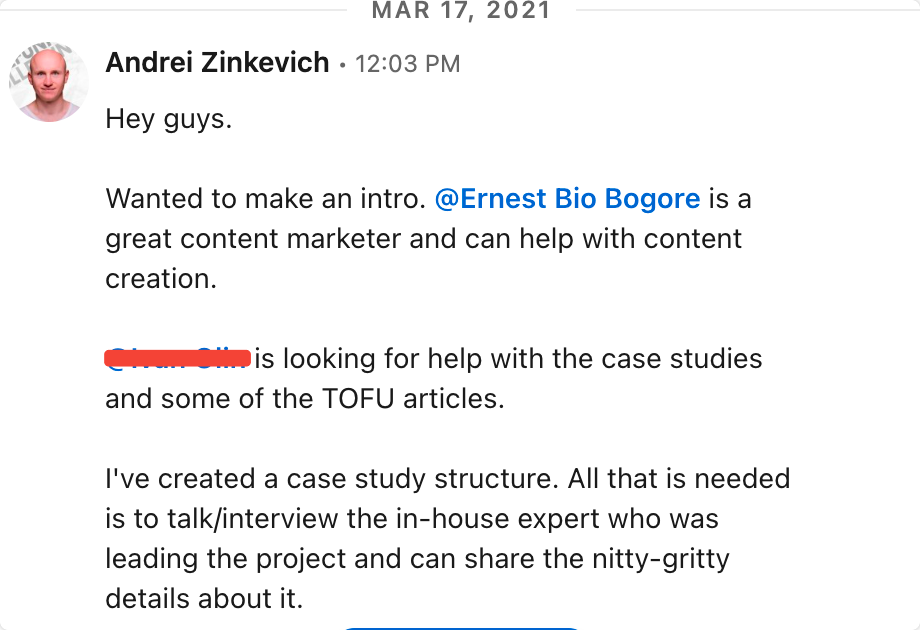
Here’s another example of a LinkedIn cold message without any connections in common.
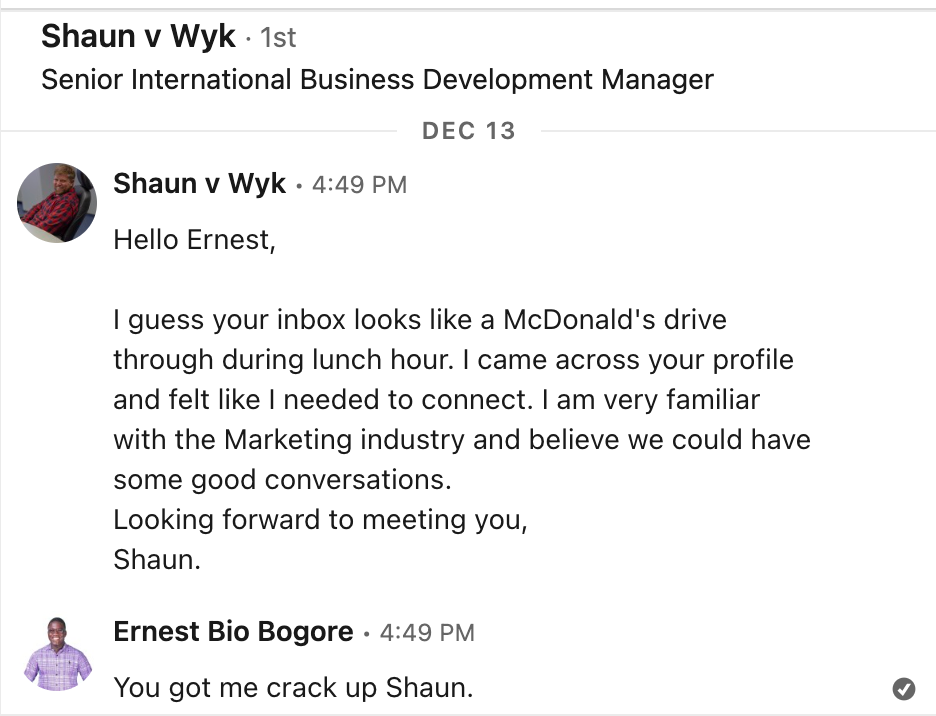
Cold calls
Cold calling is far from dead. The real question is how you use it. We understand it can be a bit intrusive.
So from our point of view, the best way to do cold calls is after a few cold email touches when the prospect knows you or when they’ve gone silent on your messages.
Here are a few cold calling best practices most sales and marketing teams use.
- Know your prospect
- Craft a personalized calling script
- Don’t be attached to the script
- Provide value
- Hold conversations that build relationships
- End every sales call by confirming what the next step is.
9 metrics for measuring outbound lead gen campaigns
If you run your campaign without having any set KPIs, it’s very easy to get off track, waste time, effort, and budget on things that are not necessary.
Outbound KPIs are important in the sense that they help you uncover the weak spots on your track and define the best ways to deliver and attribute effective results.
So, if you’re unsure of how to define your KPIs, here are some pointers.
General outbound lead generation metrics.
- MQLs (marketing-qualified leads): any potential customer that has been thoroughly vetted by the marketing team and meets the necessary criteria to be passed on to the sales team.
- SQLs (sales-qualified leads): an MQL who has been picked up by one of your sales representatives and is deemed ready for the next stage in the buying process. They’ve clearly displayed intent to buy.
- Lead-to-prospect rate: it is the percentage of leads that move on to become prospects. The average of leads that have demonstrated that they’re preparing to make a purchase decision.
- Lead-to-close rate: it represents the percentage of leads that are converted into clients.
- Time to close: this is the average amount of time that it takes for leads to become customers. It helps you compare time to close between different campaigns and assets.
- Customer lifetime value (CLV): it’s a metric that predicts how much profit a single customer is expected to bring to your company.
- Customer acquisition cost (CAC): it shows how much it costs to convert a potential lead into a new customer.
CAC represents the ratio between how much a company spends on acquiring a new customer and the total number of new customers acquired within a certain time.
Specific outbound lead generation KPIs
What are cold email KPIs to track?
- Total emails delivered: the number of emails sent by your SDRs.
- Bounced emails: The number of emails failed to be delivered to your prospect’s inboxes. To calculate: Emails sent divided by emails delivered.
- Open rate: The percentage of emails opened. To calculate: Emails delivered (minus emails bounced) divided by emails opened.
- Response rate: The total number of emails responded to, regardless of negative, neutral, or negative responses. To calculate: Emails opened divided by prospect responses.
- Appointment rate: The rate of appointments scheduled per contacts touched. To calculate: (Prospects contacted divided by appointments scheduled) times 100.
- Conversion rate: Of all the leads you reached out to, how many were you able to convert into customers?
What are cold calling KPIs to track?
- Number of calls made: The total number of phone calls made by SDRs within a certain period of time.
- No answer: The number of unanswered calls.
- Unreachable: The number of calls that failed to reach a certain phone number.
- Voicemail: The total number of voicemails left to the prospects.
- Types of Responses: The number of calls that lead to a follow-up, referral, positive conversation, or appointment. The number of calls that reached out to a gatekeeper (not the right person or the right prospect).
What are social media outreach (LinkedIn) KPIs to track?
- Invitations sent: The number of invitations sent to potential prospects during a certain period of time.
- Invitations accepted: The number of invitations accepted.
- Types of responses: The number of positive, negative, and neutral interactions, and the number of appointments set.
- Connection rate: The number of accepted invitations out of the total number of invitations sent. To calculate: accepted invitations divided by invitations sent.
- Response rate: The total number of answers received (regardless of the types of responses).
Key takeaways
- Outbound lead generation is the best way to sell to people who are not aware of your business or how your services can help them.
- Cold email is the most effective and friendliest way to reach out to your prospects. Which makes it your best bet for a solid outbound lead generation campaign.
It’s a result-driven approach that allows you to connect easily with your prospects. Just make sure that you put in the necessary work and investment. - General KPIs and metrics will not always inform on your campaign success. So, after an outbound lead gen campaign, always be sure to focus on the campaign metrics that matter to your specific strategy.
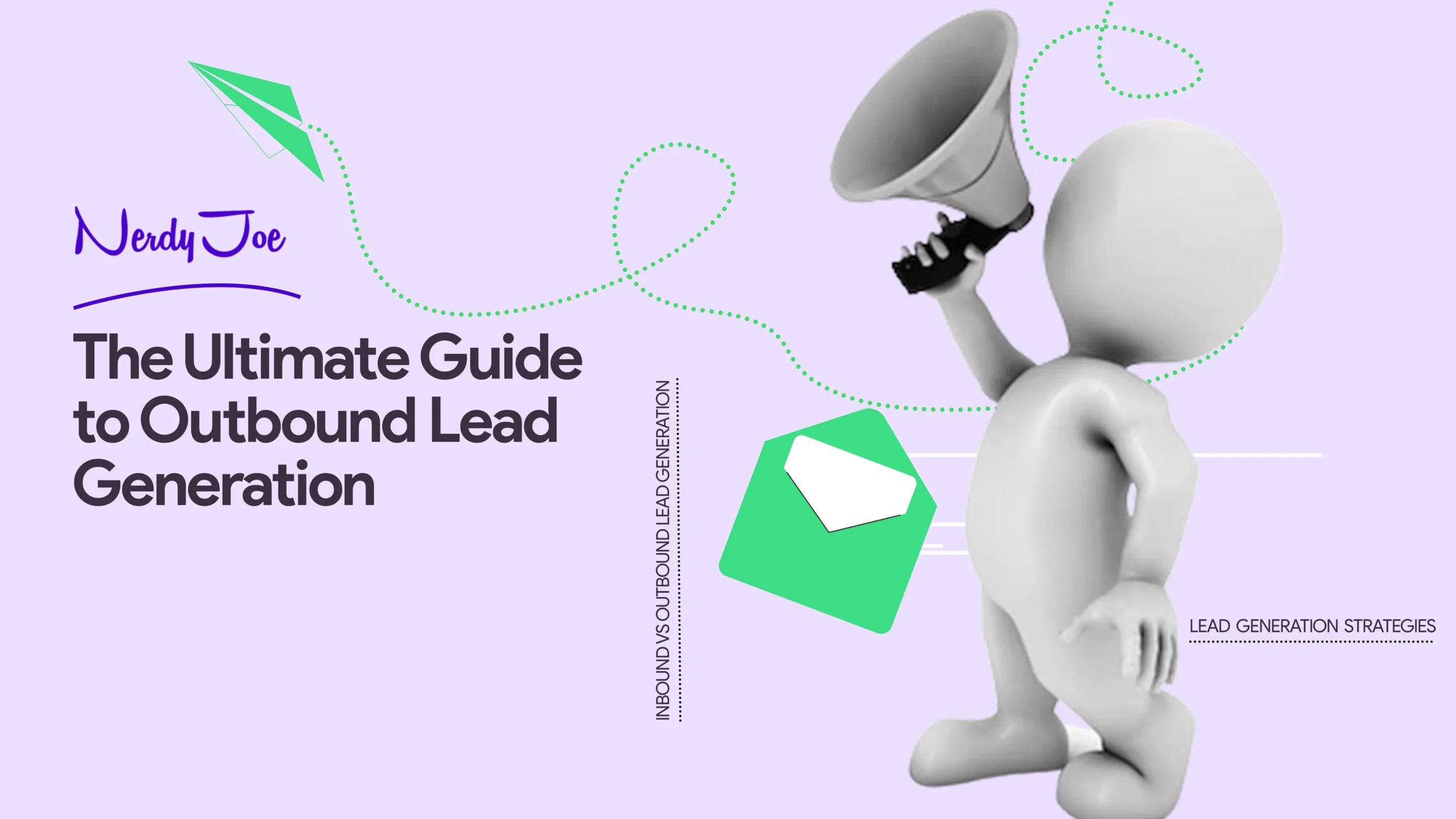
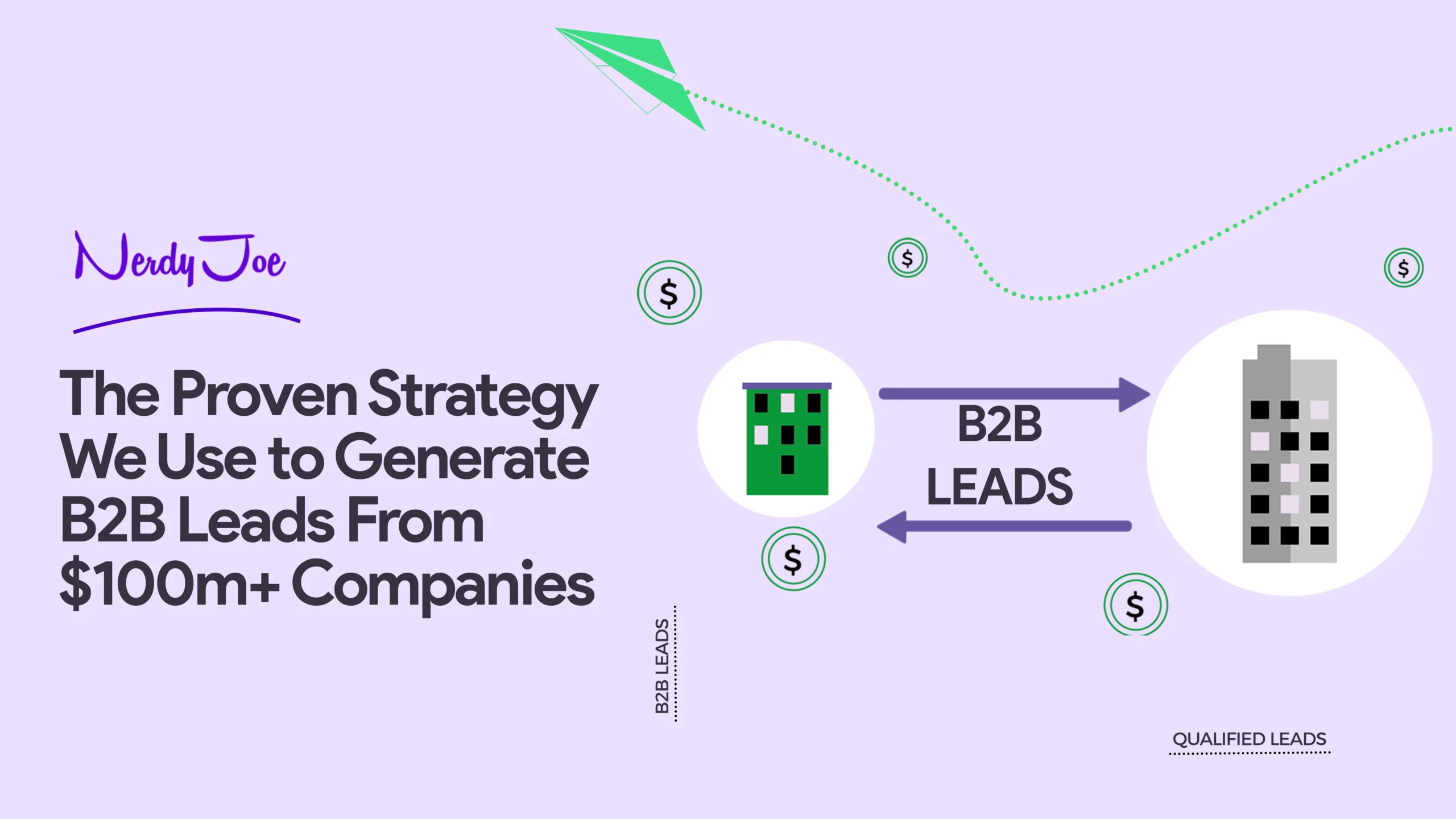
![How to Generate B2B Leads With Cold Outreach [Case Study]](https://nerdyjoe.com/wp-content/uploads/2024/06/1669218674-artboard-1-copie-4-3x-1-scaled.webp)
